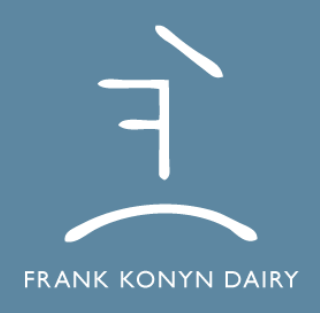Frequently Asked Questions
IS IT TRUE COVID-19 IS HAVING A SUBSTANTIAL NEGATIVE IMPACT ON THE DAIRY INDUSTRY?
Yes. 60% of the butter made in the US is used in the food service industries. And 50% of the cheese made in the US is used in food service industries as well. With the closure of schools, restaurants, and conventions, this market has shut down, so processors that were set up to process for food service have told dairyman they do not need the milk. These processors have no choice, as their equipment is set up for bulk packaging for food service, not for retail sales.
A cheese manufacturer, for example, can’t bottle milk. They just don’t have the right equipment. There are plenty of agricultural products available, but it’ll take time for processors and shippers to adjust to this rapidly changing demand structure, and unfortunately cows need to be milked every day… we cannot turn them off like a faucet. Unfortunately, there is still too much milk in the country right now, as an average restaurant meal uses .6 pounds of dairy compared to a meal made at home, which averages only .4 pounds. Overall, across all industries, dairy simply is not being consumed in the same volume as it was pre COVID-19.
Where can I buy your products?
Frank Konyn Dairy, Inc. is a member-owner of California Dairies, Inc. (CDI), a cooperative owned 100% by California dairy farmers. Collectively, our milk is sold to dairy processing companies throughout California, making many of the products you probably recognize (Alta Dena, Yoplait, Kroger, etc.). The remaining volume of milk is manufactured by CDI’s own processing facilities and turned into products like butter and powdered milk. You can find our butter on your local grocery store shelves under either CDI’s own label (Challenge Dairy Products) or even under a host of private labels (such as Costco’s Kirkland or Walmart’s Great Value). For a complete listing of the products CDI manufactures, you can visit their website.
Purchasing any of these products supports local producers of milk and cheese like the Frank Konyn Dairy.
Do you sell directly to the public?
No. We do not have the permits or processing facilities to sell raw milk, but we hope that day will come in the future. Follow us here on our website or on Facebook and we’ll update you as we progress in this area.
Do you do tours?
This is a working dairy farm, and while we occasionally do tours, the biosecurity and health of our animals is far more important to us. We will review requests on a case-by-case basis, but in general, we greatly limit the amount of tours we do for the reasons cited above.
Do you have animals for sale?
No. All of the animals in our herd are bred and raised for producing milk for our business and are not for sale to the general public.
Why are you one of the last remaining dairies in San Diego County?
At one time, there were over 200 dairies in San Diego County. As the cities grew, the value of the land became higher, and dairies sold their property to move to areas where the land was cheaper and they could purchase more land to grow all of their crops right around their new dairies. Many dairies relocated to the Central Valley of California where they are closer to feed mills, and have cheaper feed costs. Other dairies relocated out of California to states that have a regulatory environment that is friendlier to agriculture.
What do your cows eat?
Each cow has different dietary needs. These needs are based upon the age of the animal, whether or not she is pregnant, and what her level of milk production is. We like to think of our cows are Olympic athletes, and as such, they are on a very strict diet for high performance. We have a nutritionist on staff, and the food for our cows is prepared fresh daily. All feed stuffs are sent to a laboratory for complete nutritional analysis. Then they are blended together to prevent the animals from sorting their feed. We want the cows to get a complete balanced diet that does not vary from day to day. The various forage ingredients include dry alfalfa hay, fresh alfalfa green chop from our farm, our own alfalfa haylage, and wheat straw. Other ingredients include rolled corn, dried distillers grains, canola, cottonseed, spent brewer’s grains, almond hulls, wheat middlings, bakery products, and mineral and vitamin supplements as well.
Don’t Cows produce a lot of methane that contributes to global warming?
Due to their high fiber diet, cows do indeed produce methane. But in the United States, while the dairy and beef sectors have been called out as a major source of this greenhouse gas (GHG), - higher than even our extensive transportation system - life cycle analyses and research show otherwise. “According to the U.S. Environmental Protection Agency, the largest sources of U.S. GHG emissions in 2016 were electricity production (28 percent of total emissions), transportation (28 percent) and industry (22 percent). All of agriculture accounted for a total of 9 percent. All of animal agriculture contributes less than half of this amount, representing 3.9 percent of total U.S. greenhouse gas emissions.”
Research by NOAA confirms the volume of methane in the atmosphere is increasing, but are cows to blame? “If the number of cattle was increasing, then they could be considered part of the increased methane release to the atmosphere.” But “Cattle numbers in the United States…have been stable or declining for many years (NASS, 2018).” In fact, “Dairy cow numbers in the United States are the lowest they have been in over 100 years. Their number peaked in 1945 and has been declining ever since.” This is one of several important distinctions related to methane production from cattle. Explore these factors in more depth here.

